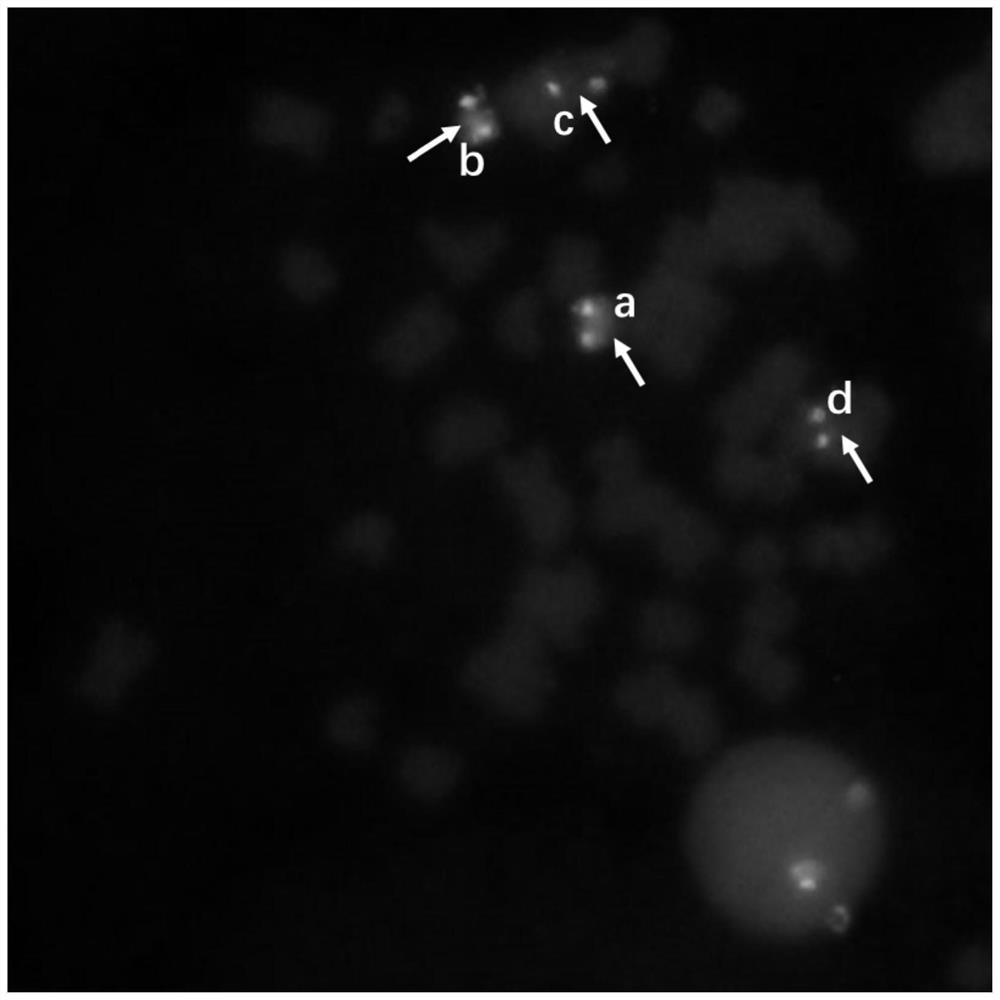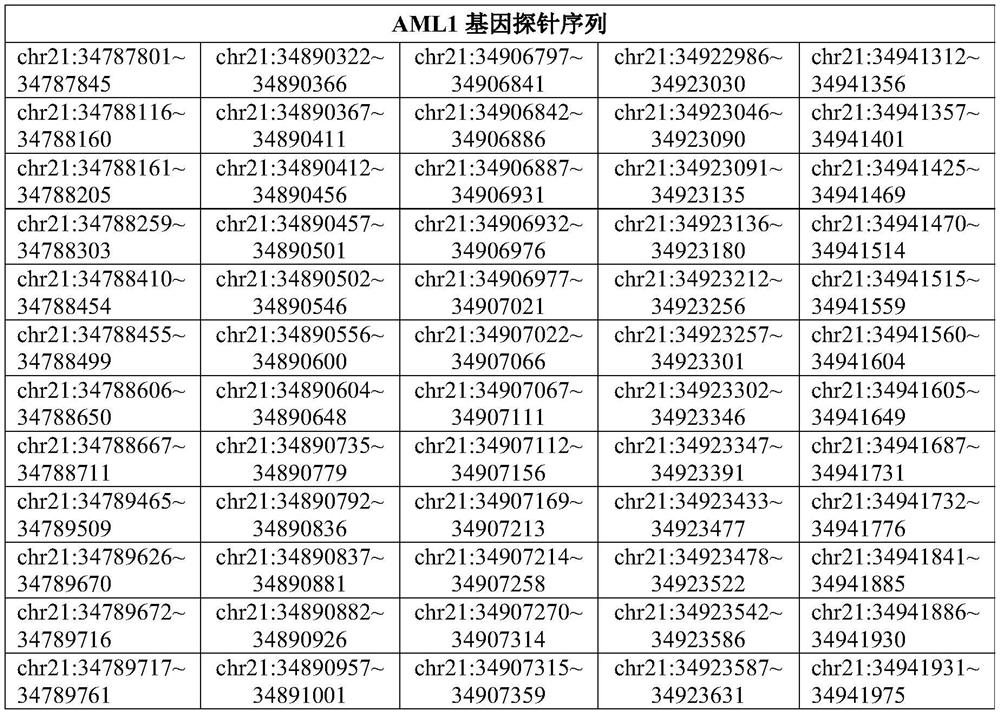Fluorescence in-situ hybridization probe group for detecting AML1/ETO gene and application of fluorescence in-situ hybridization probe group
A fluorescence in situ hybridization and probe group technology, which is applied in DNA/RNA fragments, recombinant DNA technology, microbial measurement/inspection, etc., can solve the problem of low probe specificity, long hybridization time, large probe fragments, etc. problems, to achieve improved resolution, high sensitivity, and high specificity
- Summary
- Abstract
- Description
- Claims
- Application Information
AI Technical Summary
Problems solved by technology
Method used
Image
Examples
Embodiment 1
[0021] A method for preparing a fluorescent in situ hybridization probe set for detecting AML1 / ETO gene, specifically comprising the following steps:
[0022] S1, based on the sequences of AML1 and ETO genes, design a nucleotide sequence containing 45 bases in a 100kb region without repetitive sequences, set the Tm value of the probe at 50°C, and the GC content range of 40-60% , after discarding the sequence containing AAAA / TTTT / CCCC / GGGG, 2860 candidate probes were obtained, and after the whole gene (hg38) BLAST comparison analysis, a total of 2440 nucleotide sequences were finally obtained, as shown in Table 1 below ;
[0023] S2, add a 20bp tag sequence to the 5' end of each nucleotide sequence and a 20bp tag sequence to the 3' end to obtain a series of characteristic primers with tag sequences, wherein the 5' end tag sequence is : TAATACGACTCACTATAGGG (SEQ ID NO: 1), the 3' end tag sequence is: CCGCTGAGCAATAACTAGCA (SEQ ID NO: 2);
[0024] S3, using high-throughput chip ...
Embodiment 2
[0052] Embodiment 2 Normal people's peripheral lymphocyte droplet experiment
[0053] Materials: human peripheral blood lymphocyte culture medium, colchicine, hypotonic solution (0.4% KCl), fixative solution (methanol:acetic acid=3:1, volume ratio).
[0054] S1, cell culture and synchronization: take 0.4mL heparin anticoagulated whole blood (from the hospital) in human peripheral blood lymphocyte culture medium, mix well and culture in a constant temperature incubator at 37°C and 5% CO2 for 72h, and stop at For the first 4 hours, add colchicine to the medium to a final concentration (0.1 μg / mL) and continue culturing for 4 hours;
[0055] S2, collection and fixation: collect the medium, centrifuge at 500g for 5min, discard the supernatant, add 0.4% KCl hypotonic solution and incubate for 30min, then fix the cells with methanol-glacial acetic acid mixture, let stand at room temperature for 10min, centrifuge at 500g to pellet the cells , repeat the cell fixation step once, after ...
Embodiment 3
[0062] Referring to the method of Example 2 to detect slides containing 50 metaphase lymphocytes, the results are shown in Table 3 below. It can be seen that there are 99 FISH signal points of the AML1 gene probe, and the sensitivity reaches 99%. There are 99 FISH signal points for gene probes, and the sensitivity reaches 99%.
[0063] Table 3 Sensitivity test results of probes
[0064] probe type Metaphase lymphocytes (units) FISH signal points (pieces) sensitivity AML1 gene probe 50 99 99% ETO gene probe 50 99 99%
PUM
| Property | Measurement | Unit |
|---|---|---|
| Sensitivity | aaaaa | aaaaa |
Abstract
Description
Claims
Application Information
 Login to View More
Login to View More - R&D Engineer
- R&D Manager
- IP Professional
- Industry Leading Data Capabilities
- Powerful AI technology
- Patent DNA Extraction
Browse by: Latest US Patents, China's latest patents, Technical Efficacy Thesaurus, Application Domain, Technology Topic, Popular Technical Reports.
© 2024 PatSnap. All rights reserved.Legal|Privacy policy|Modern Slavery Act Transparency Statement|Sitemap|About US| Contact US: help@patsnap.com










